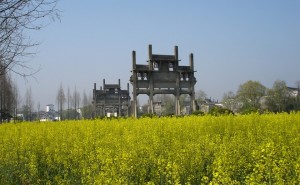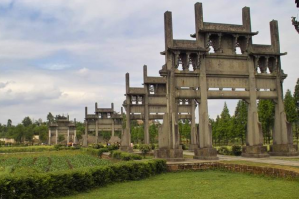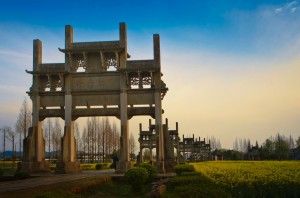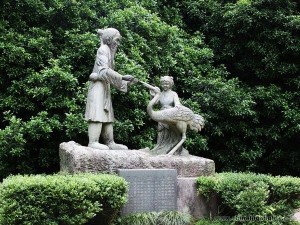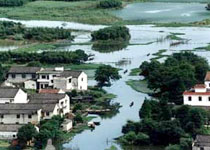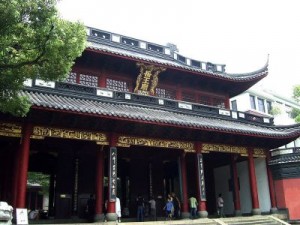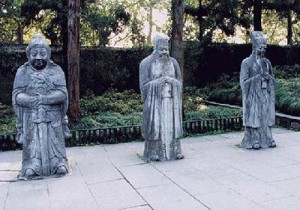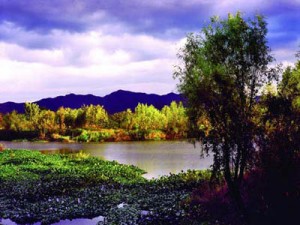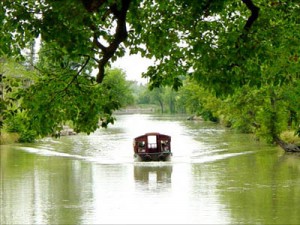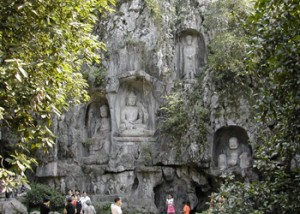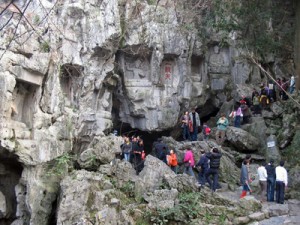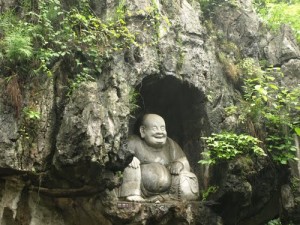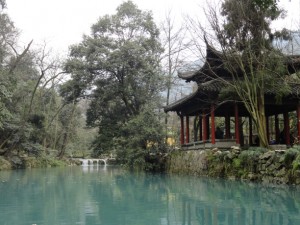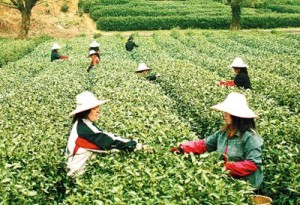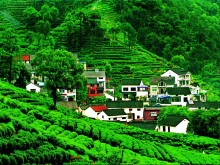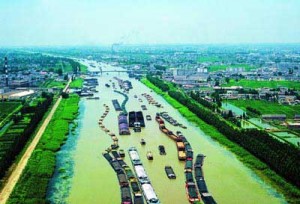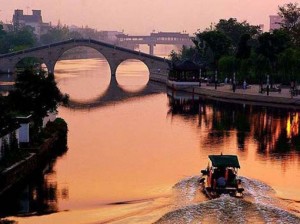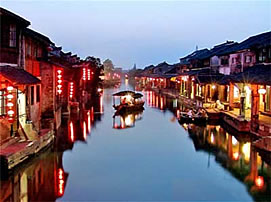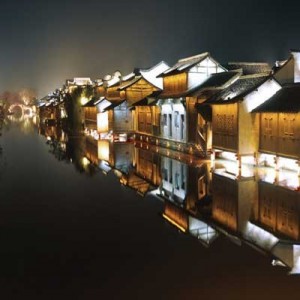Tangyue Memorial Archways is located in the east avenue of the Tangyue Village in Zhengcun town, Shexian County, Anhui province. There are 7 Memorial Archways in total, among which three were built in Ming Dynasty and four were built in Qing Dynasty. It is the most memorial archways among the south of Anhui province. These seven Memorial Archways set together in groups featuring primitive simplicity and elegance. No matter you view them from the front or the back, you will find them set in the order of loyal, filial piety, section and righteousness, and every Memorial Archway has its emotion interweave and moving story.
Being a national key cultural relics protection units nowadays, the Tangyue Memorial Archways is neighboring the ancient ancestral temple, ancient dwelling and ancient pavilion residence. Under the vast backdrop of beautiful mountain light and water color with pastoral scenery, the Tangyue Memorial Archways has been the natural film and television base which worthy your visit.
Tangyue Memorial Archways is the representative work of the architectural art in Ming and Qing dynasties. It’s architectural style integrated at mass, though its time span has been hundreds of years, it still shows its uniqueness and characteristic. Tangyue Memorial Archways are nearly used the stone material, especially those Shexian county green stone whose quality and texture are excellent, instead of those wooden structure material. Theses kinds of green stone Memorial Archways are solid and strong, tall and straight, noble and magnificent, straight and impressive looking. The archway architecture art has been improved during the Ming and Qing Dynasties. Building experts think that Tangyue Memorial Archways has greatly important value to the research of policy, economy, culture and architectural art of the Ming and Qing Dynasty and to the formation and development of the Hui business and even the dwellings folk there.
Travel information: 1)Opening time: 7:30 a.m.-17:30 p.m. 2) Ticket price: 100 RMB/adult.3) Ways to go there: take the No.4 city public bus with the price of 3 RMB.
